Boletus pinicola
2 years ago · Updated 6 months ago
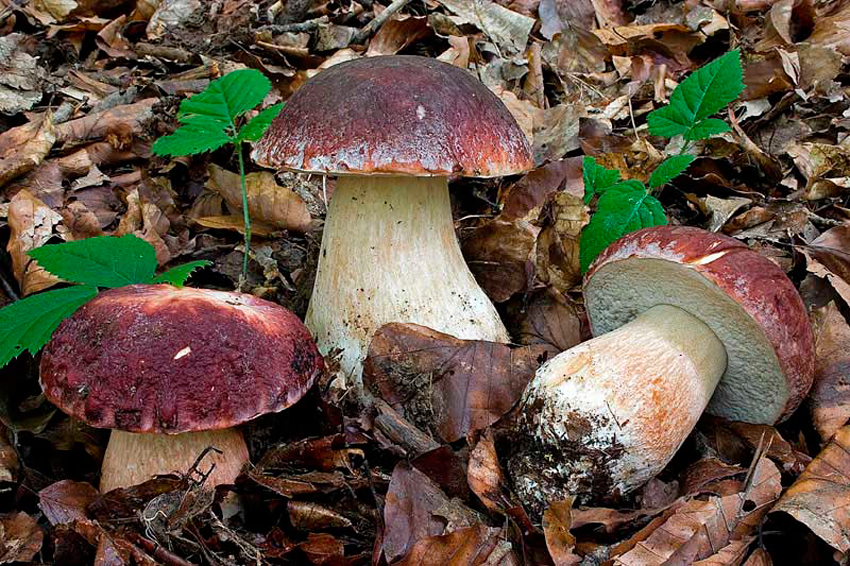
In many areas where mushroom hunting is most interesting in our geography, the boletus pinícola is the first edible boletus to appear in spring after storms.
- What are the common names for Boletus pinícola?
- What are the nutritional properties of Boletus pinophilus or pine bolete?
- When do boletus pinicola appear?
- Where should I look for Boletus pinophilus?
- Boletus pinohilus, a capricious mushroom
- Can I confuse Boletus pinophilus or pinícola with other species of mushrooms?
- Boletus pinicola à la plancha with farm-fresh egg yolk
- Would you like to see photos of boletus pinícola?
What are the common names for Boletus pinícola?
This delicious mushroom, considered an excellent edible, appears in many places and has been consumed and sought after for a long time. It is normal for this boletus to have many common names depending on the area where it is found.
Its scientific name is Boletus pinophilus (Order: Boletales, Family: Boletaceae, Genus: Boletus), but it is also known as bolet des pins, champignon des pins, cep vermellós, calabaza, onddo beltz kaskagorri, corvall de pi, kaskabeltz, and cep rogent. bolet acajou, cogumelo dos piñeiros, madeirudo (g. ).
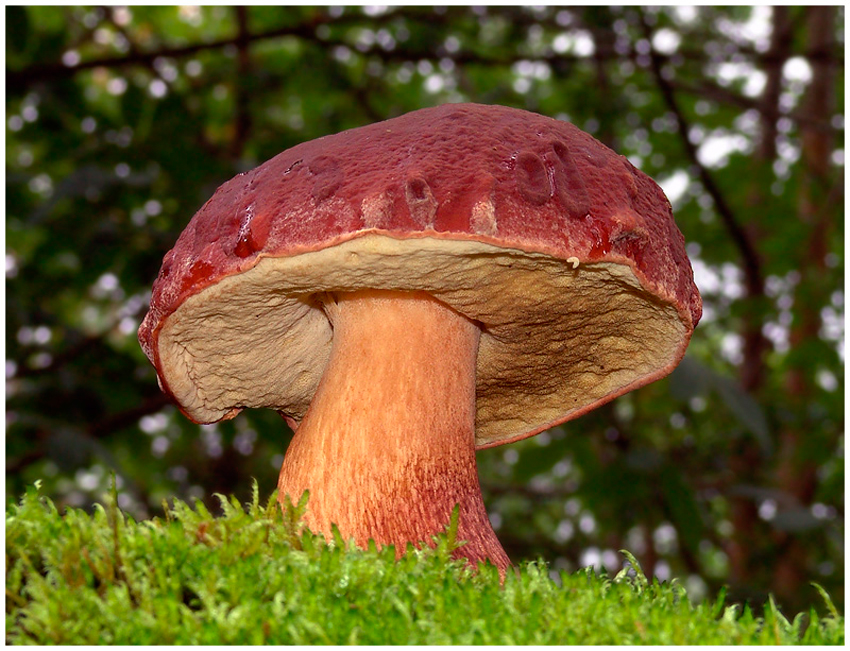
What are the nutritional properties of Boletus pinophilus or pine bolete?
Like most edible mushrooms, Boletus pinicola or Boletus pinophilus is a very healthy edible mushroom with excellent nutritional value and very low levels of fat and sodium. It also contains very high levels of amino acids and protein and is cholesterol-free.
It is worth highlighting its excellent mineral content, including phosphorus, selenium, and copper. It also has a significant amount of B vitamins, such as ergosterol, an excellent promoter of vitamin D.
Boletus pinophilus is not only highly prized in cooking for its excellent taste, but also has extraordinary properties for our body:
- It is beneficial for our heart
- Rich in vitamins and minerals
- Protects and strengthens the immune system
- Protects the heart.
- It is an effective treatment for anemia.
- Has benefits for conditions caused by stress or depression
How can you tell boletus pinicola apart?

Boletus pinicola is a very easy mushroom to identify. By following these guidelines, you will see that it is very difficult to confuse it with other species.
Cap: this boletus is characterized by its large size, reaching up to 25 cm and even 30 cm in diameter when mature. When young, it has a hemispherical shape, which becomes flat and convex as it matures. The color of its cap varies somewhat, but always in reddish tones. Thus, when young, it is reddish-brown in color, turning to mahogany tones when mature.
The cuticle of the boletus pinophilus is velvety and dry to the touch, becoming more shiny in humid conditions. It is difficult to separate it from the flesh. Its cap is also difficult to detach.
Stem of Boletus pinophilus: it is bulbous when young, becoming elongated in mature specimens. It starts out whitish in color, turning cream with a reddish reticulum that sometimes stains it almost entirely.
Tubes: adnate and elongated, white in their early stages, turning greenish-yellow when mature. They grow fairly close together and do not change color when touched or cut.
Pores: round and close together. They are uneven in size and change color in the same way as the tubes.
Flesh: Firm and thick, white in color and compact, acquiring a reddish hue only in the area near the cuticle. It has a very pleasant flavor and aroma that intensifies with dehydration.
Spores: The spores of Boletus pinophilus are olive brown in color.
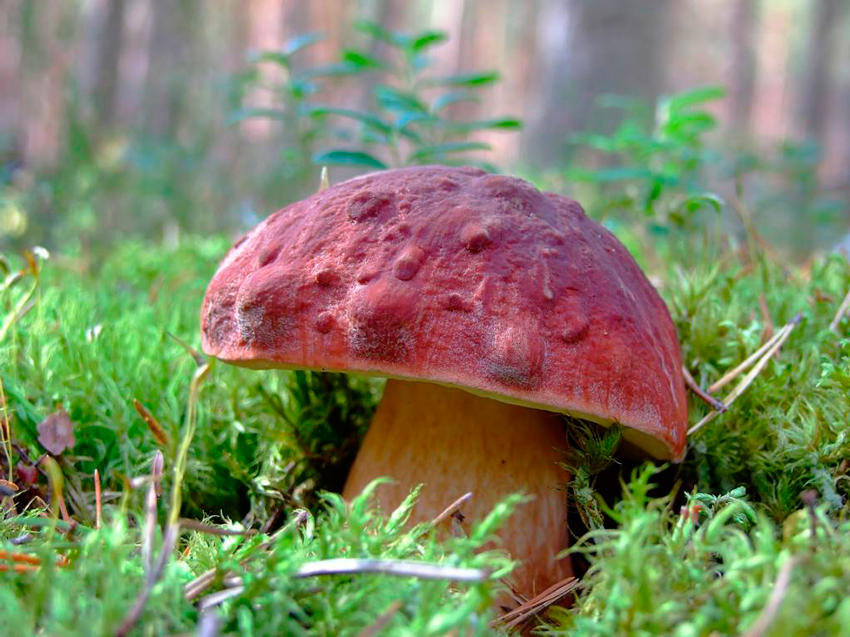
When do boletus pinicola appear?
If you like going out to look for porcini mushrooms, you're probably wondering when you can look for Boletus pinicola. This pine mushroom can be found almost all year round. It only stops appearing in winter. They start to appear after the spring rains in May. They also appear in abundance in summer after summer storms. But it is in autumn that they are most abundant, mainly from late September to almost the end of November, depending on the location.
For porcini mushrooms to appear, we need several episodes of rain, not too heavy and spaced out, followed by a few sunny days. This gives the soil time to drain.
If the wind is calm and does not dry out the surface of the soil, the first cep mushrooms will appear after 10-12 days
It is important that the soil temperature fluctuates between a minimum of 6-7 degrees and does not exceed a maximum of 29-30 degrees, while maintaining a high level of humidity. Boletus pinícola tolerates cold better than its relatives (aereus or reticulatus), so the optimal temperature would be between a minimum of 16 degrees and a maximum of 23 degrees.
Where should I look for Boletus pinophilus?
If you look up the meaning of its name, you might think that it only grows in association with pine trees and conifers. But the reality is very different, and although it does like pine trees, it can also be found growing with oak and beech trees. In fact, in some areas of the Peninsula, it is more common to find it associated with beech or oak trees than with pine trees.
It likes acidic soils and often shares its habitat with marzuelos. Therefore, if we know good places for higrophorus marzuolus mushrooms, we should take this into account when looking for boletus pinícolas during their season. In spring, we should look for boletus when the marzuelos season is already well underway, as they tend to appear for the first time around this time, provided that the rains are favorable.
You may also be interested in these other boletus mushrooms
Boletus pinohilus, a capricious mushroom
The pine boletus is a mushroom that appears abundantly in some regions, while in others it does not appear at all. But don't despair, because it is widespread throughout the Iberian Peninsula. It is also very abundant in France and Italy and is found throughout most of Europe.
Can I confuse Boletus pinophilus or pinícola with other species of mushrooms?
One of the advantages of Boletus pinophilus or pinícola is its identification. It is very easy to distinguish it from other mushrooms and it has no toxic species with which we can confuse it. At most, it may be similar to other edible boletus mushrooms such as:
Boletus edulis, with a pale cuticle, has a noticeably lighter outer edge. This boletus has a more viscous cuticle in humid weather. It also has a white reticulum on a cream background along the entire length of the stem.
The difference with Boletus aereus is greater because the tone of its cap is much darker, verging on coppery black.
Boletus aestivalis or reticulatus has a less rough cuticle, a light ochre color, and a stem with a more pronounced reticulum.
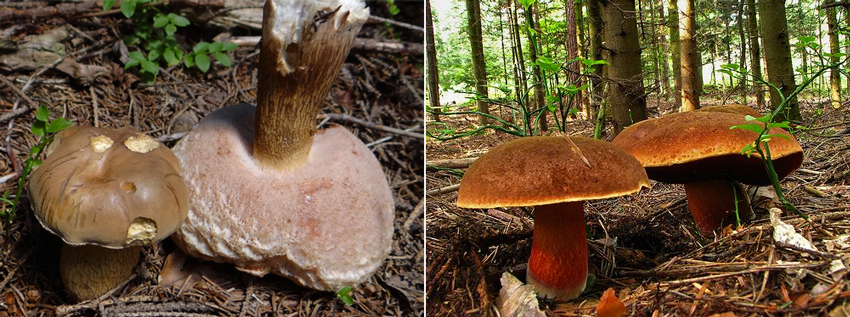
The reddish tone of the stem of Boletus erythropus and its red pores make it almost impossible to confuse with other species.
Perhaps the most dangerous confusion is with Tylopilus felleus, a boletus with a pink rather than yellowish-white hymenium. This species has an extremely bitter taste, although it is not poisonous.
If you were lucky enough to find a few specimens of pine mushrooms on your last trip to the forest and are wondering how to clean, cook, and store this edible mushroom, we'll tell you everything you need to know so you can get the most out of it in the kitchen.
What is the best way to clean Boletus pinophilus?
The first step in cleaning boletus mushrooms is to check that they are healthy. To do this, we will check carefully that there are no traces of “drill” or worms. They love boletus mushrooms, and we must be very careful not to ingest more protein than necessary. We will check the base of the stem carefully and cut the cap to make sure.
We recommend checking the mushrooms as soon as possible to prevent mushrooms with insects from contaminating the rest of the mushrooms, and also to prevent worms from damaging more than necessary. We should clean the mushrooms as soon as we get home.
If we find a damaged area, we will remove it and clean the rest so that it can be used. Although the boletus is not whole, these pieces of boletus flesh are ideal for cooking scrambled eggs, risottos, or stews.
If the underside of the cap, the pores, is white, we can use it completely, but if it already has a greenish-yellow hue, which means the boletus is mature, we will have to discard it. This is very easy to do because using your fingers or a knife, you can easily remove the pores.
For a more thorough cleaning, do not wet or soak the boletus mushrooms or other mushrooms any more than is strictly necessary. Wetting them excessively causes them to lose flavor, aroma, and texture. Furthermore, in the case of all boletus mushrooms, the structure of the pores easily absorbs water and releases it during cooking, resulting in dishes with excess water.
A good method is to use a damp cloth or tea towel. Once wrung out, use it to remove any impurities, soil, and plant matter that may have stuck to the boletus mushrooms.
Finally, scrape the base of the stem to remove any remaining soil and vegetation, and cut off the tip with a knife. The boletus mushrooms are now clean and ready to be used in cooking.
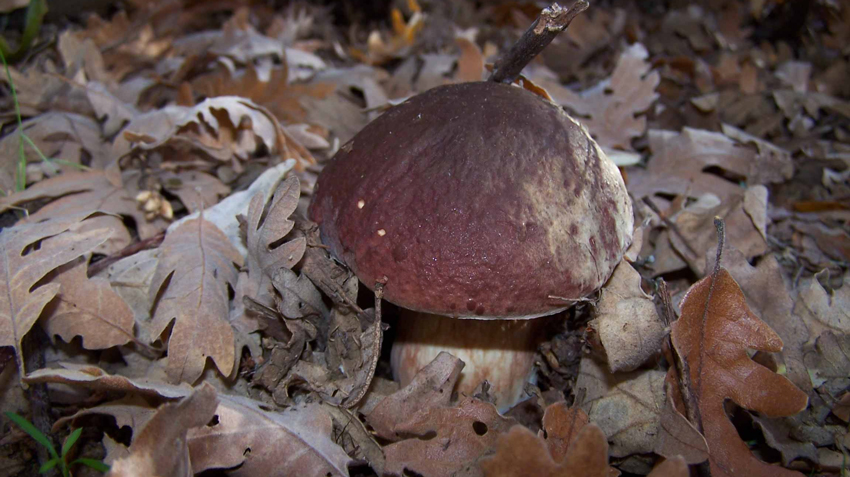
How to store pine boletus mushrooms
The Boletus des pins is a mushroom that is highly prized by food lovers. Like other top edible boletus mushrooms (edulis, aereus, reticulatus), it is ideal for preparing a wide variety of recipes. This is due to the texture, flavor, and aroma of its flesh.
Mushroom chefs particularly appreciate the very pleasant aroma of their flesh, which is soft in texture, white in color, and does not change color when cooked.
However, we will not always use all the boletus pinícola mushrooms we have harvested. If we are lucky enough to find a good crop of mushrooms, we will have no choice but to preserve them for later use. And here, the boletus pinophilus wins hands down over other mushrooms.
One of the best ways to preserve boletus mushrooms is to dehydrate them. This enhances their flavor, if anything.
Another option is to freeze them. To do this, we will cut the well-cleaned porcini mushrooms into uniform cubes and store them in a container. When cooking, we will not need to thaw them, so they will retain their characteristic texture.
If you want to keep them in the refrigerator for later use, the best way is to cover them with a damp cloth. This way, you can keep these mushrooms in the refrigerator for several days, although you should not exceed this time to avoid losing their texture.
Recipe with Boletus Pinophilus
To finish, we'll leave you with a very simple but delicious recipe for porcini mushrooms. We all know how well eggs and mushrooms go together, don't we? Well, this simple recipe proves it. All you need is a few slices of fresh pinicoles and a farm-fresh egg yolk... and a baguette, because you'll want to dip it in generously. Here's the recipe:
Boletus pinicola à la plancha with farm-fresh egg yolk
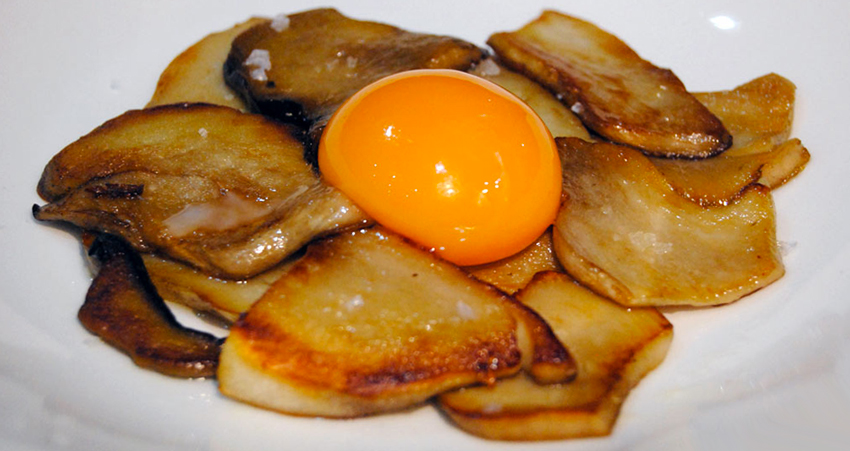
Ingredients
- 500 g fresh porcini mushrooms
- 2 large free-range eggs
- extra virgin olive oil
- coarse salt
- country bread
Preparation
Cut the porcini mushrooms into thin slices, 2 to 3 mm thick, slightly thicker than for carpaccio.
Add a few drops of extra virgin olive oil to the griddle and wait until it is hot. It is important not to use too much so that the taste of the oil does not overpower the taste of the mushrooms.
Once the griddle is hot, brown the mushrooms on both sides until they are golden brown.
Place the mushrooms on a plate and add coarse salt.
Separate the egg yolks and place them on top of the mushrooms.
Serve hot and, before serving, cut the yolks so that they melt over the mushrooms.
All that's left to do is mop up the plate with some country bread.
Bon appétit!
Would you like to see photos of boletus pinícola?
Here are some photos of this mushroom, images of boletus that speak for themselves! A marvel.If you liked this article, don't forget to share it. Mycological greetings! ! !

Te pueden interesar